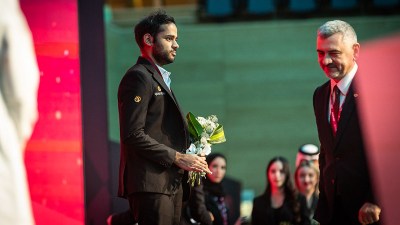Language Skills
Bahujan Sukhay,a project by city-based Sanskrit enthusiasts,aims to bring the ancient language to the masses
There is a Sanskrit dictionary that academicians and experts were working to compile. Simple as the project may sound,50 years later,the dictionary is still not finished. “The project started in 1960,but the language is so vast,and the grammar so complex,that there is still work to be done. When the dictionary will be completed,it will be at least three times bigger than the Oxford dictionary,” says Vinay Hardikar,a Sanskrit enthusiast.
While the academic community focuses on dictionaries and lectures to keep the language’s intricacies alive,Hardikar says it is not enough for Sanskrit to survive. Especially when the language only reaches out to a handful while alienating others. “There was a time when Sanskrit was the language of the people. On estimate,there might have been over one crore people who spoke Sanskrit then,but now you can count Sanskrit speakers on your fingertips,” he says. In an effort to bring the language back to the masses,Hardikar collaborated with two other enthusiasts,Ram Kolhatkar and Sadanand More,to launch Sanskrit Bahujan Sukhay.
“All three of us believe in looking forward,but Sanskrit is a tradition that has shaped our culture,history and our national personality. We should not leave it behind,” says Sadanand More.
“We started last year and have been getting experts,enthusiasts and beginners together to learn and appreciate Sanskrit in a modern context,” says Kolhatkar. During meetings,the group has discussions,translations from Sanskrit texts and also encourages participants to write their own stories,anecdotes and couplets in Sanskrit,moulding the language to make it more relevant and more enjoyable. “There is a famous saying from Manusmriti about the denial of freedom to women. It goes,Pita rakshiti kaumare,bharta rakshiti yauvane,thavire rakshiti putrahaa,na stri swaatantram arhati. (In her childhood protected by father,by husband in youth and by her son in old age,a woman doesnt need or deserve freedom. I inverted the saying to Kaumare cookati mata,garhaste cookati bharya,vardhakye cha smusha-kanya, paropushpaha narha khalu. (Men are fed by their mother,wife and daughters in law through their life; they always thrive on labour of others),” says Hardikar.
He recalls that orthodox academicians didnt like the introduction of an English word (cook) to the language. “But if we are using so much English in Marathi and in Hindi,why not in Sanskrit? We need to let go of this brahminical attitude to Sanskrit.”
According to Hardikar,this attitude is what cut off most of the country from the language. “And then they stopped teaching Sanskrit to the masses,cutting off women and any caste lower than Brahmins. They alienated 70 per cent of the population this way,” says Hardikar. “We will not allow our group to lapse into a scholarly attitude. That is why we have named the initiative Bahujan Sukhay (for the pleasure of people),not Bahujan Hitay (for the good of people).
(The group will meet to celebrate National Sanskrit Day on August 19,6.30 pm, at Sahakar Sadan,near the Income Tax lane)







